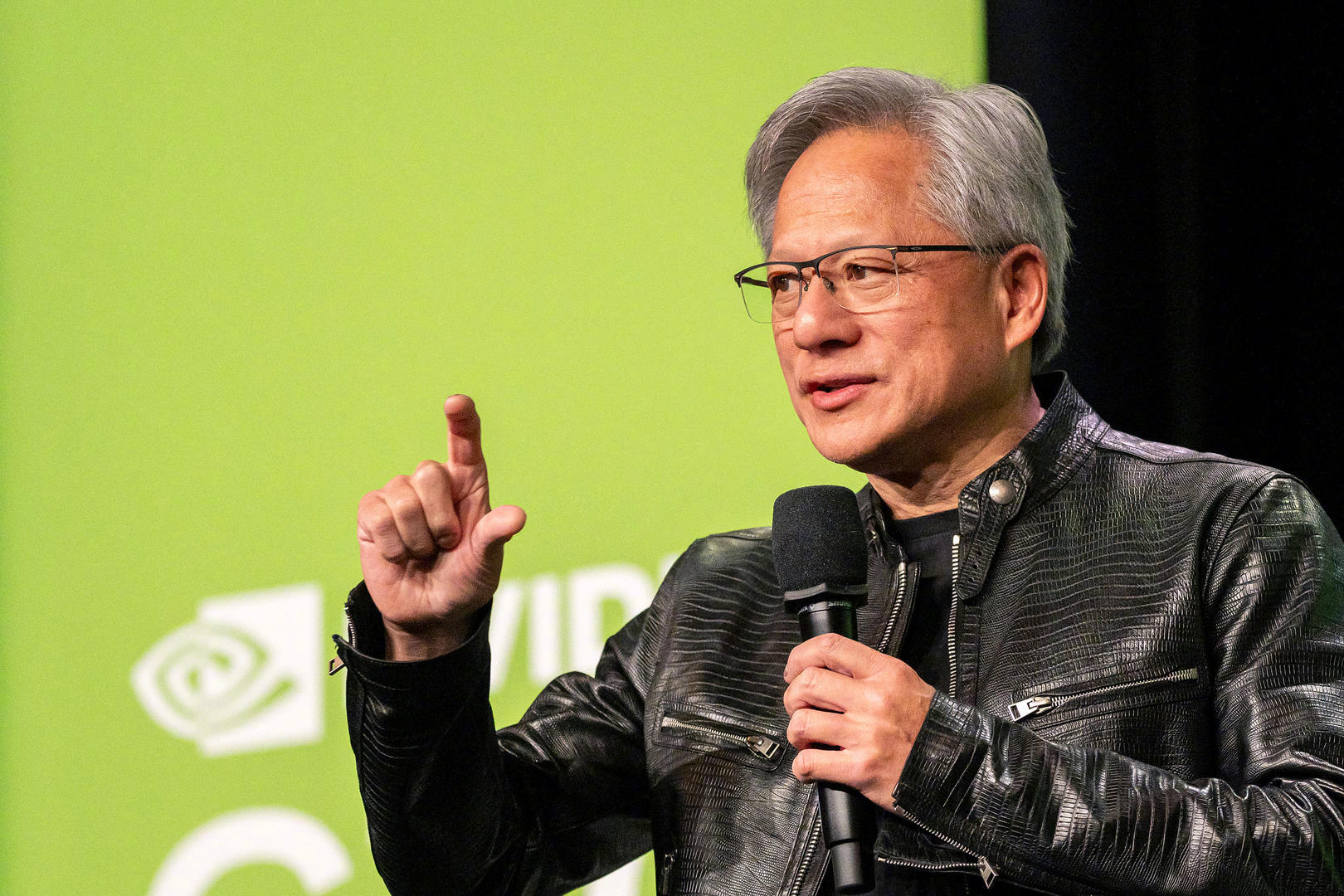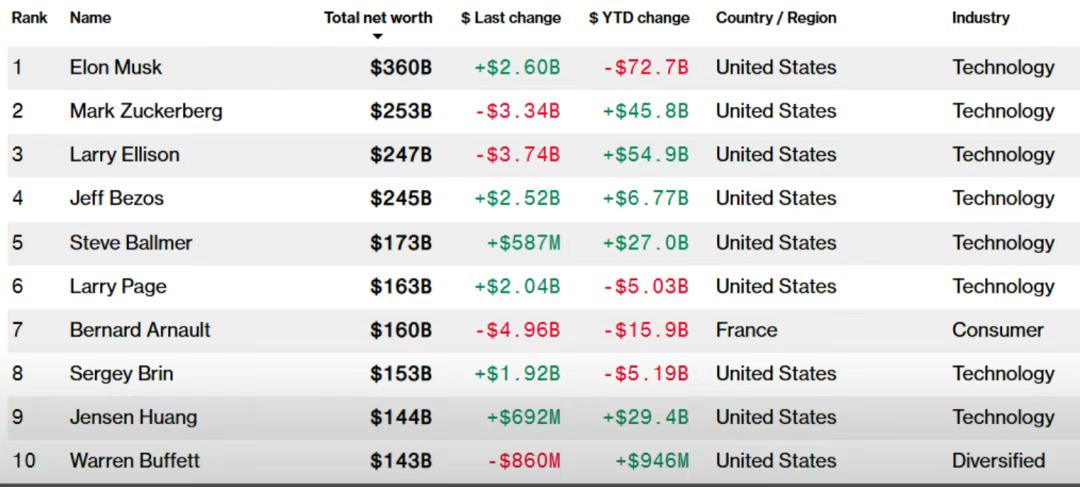
On July 11, according to documents filed with the U.S. Securities and Exchange Commission (SEC), Huang Jensen recently reduced his holdings of about 225,000 shares of the company's shares, worth about $36.4 million. The deal is part of a share sale plan it developed in March this year, which allows him to sell up to 6 million shares by the end of the year.
This series of reductions comes against the backdrop of investors' bets on Nvidia's dominance in artificial intelligence, which has pushed its stock price and Huang's personal wealth to unprecedented levels. According to the Bloomberg Billionaires Index, Huang's net worth has jumped to $144 billion, officially surpassing the $143 billion of "stock god" Buffett and ranking ninth on the world's richest list.

On the same day, Huang reduced his holdings of 225,000 Nvidia shares according to the pre-set trading plan, cashing out about $36.4 million. This is just a small step in his 6 million share reduction plan - at the current stock price of $165, he could cash out up to $985 million by the end of the year.
Market capitalization tops: the AI base of the 4 trillion empire
Nvidia's market capitalization recently exceeded $4 trillion, surpassing Apple and Microsoft to become the world's most valuable company. This is not a simple stock market fluctuation, but marks the arrival of a new era - the AI era.
Remember what Nvidia started with? That's right, those graphics cards that make gamers' blood boil. But who would have thought that in just three years, the company would not only continue to be the king in the gaming field, but also successfully transformed into an absolute leader in the field of AI chips.
Now, whether it is the tech giants of Silicon Valley or the AI plans of governments, almost everything that involves AI training is inseparable from Nvidia's chips. It can be said that Nvidia has become the core engine of global AI development.
Large factories have thrown money one after another, and Yingwei has reached the biggest winner. Take a look at the numbers: Microsoft, Meta, Amazon, and Google's parent company, Alphabet, are expected to spend about $350 billion in capital expenditures in the next fiscal year; A large part of this money will eventually flow into Nvidia's "oil pipeline" to support the development and production of its AI chips.
Nvidia CEO Jensen Huang once said an interesting thing at the GTC conference in Paris: "The data center of the future will transform from a warehouse for storing files to a factory for producing intelligence." He calls this infrastructure "AI factories," and their core mission is to generate "smart tokens" that power industries across industries.
The Wealth Code of Technology Leaders: Shareholding Concentration + Long-term Holding
Huang's way of accumulating wealth is typical, and it belongs to the typical "technocratic rich" route. Concentrated holdings: With more than 858 million shares of Nvidia in his hands, he is still one of the company's largest individual shareholders, even if he is slowly reducing his holdings. Long-term binding: He has been working since the early days of the company, working all the way to the present, and has been tying himself to NVIDIA for decades.
Huang has been selling stocks lately, but not because he is not confident about the future, but because he has been executing according to a preset trading plan called 10b5-1 that he developed in March of this year.
To explain this term briefly: it is the US Securities and Exchange Commission that allows executives of listed companies to set the time and amount of shares to be bought and sold in advance without involving insider information, and to conduct transactions legally and compliantly.
Under this plan, he could sell up to 6 million shares by the end of the year. It sounds like a lot, but in Nvidia's volume, it is actually a very gentle operation.
And this is not the first time he has done this - he sold about $700 million worth of shares through a similar plan last year, so this time it is not surprising.
Geopolitical maneuvering: the tightrope dance of chip leaders
On the same day that Huang's net worth surpassed Buffett's, he appeared at the White House to meet with US President Donald Trump. The meeting was not easy, because he was scheduled to visit China next Wednesday (July 16) to participate in the "International Supply Chain Promotion Expo" in Beijing.
Trump is at Truth Social posted praises: "Nvidia's stock price has risen 47% since the tariffs were implemented" and said that the United States "made hundreds of billions of dollars" through tariffs. Behind these words actually hints at the core topic of the talks between the two - the US chip export control policy to China.
今年4月,特朗普政府进一步收紧了针对中国的AI芯片出口限制,直接导致英伟达专门为国内市场设计的H20芯片被禁售。黄仁勋曾公开批评这一政策:“扼杀了一条通往全球成功的跳板。”
In the first quarter alone, these restrictions cost Nvidia about $2.5 billion. Faced with such a huge market (worth about $50 billion), Nvidia is obviously unwilling to give up easily.
In order to find living space on the edge of the policy red line, Nvidia is developing a special version of the AI chip. The chip is expected to launch in China as soon as September and is based on Blackwell RTX Pro 6000 processor has been improved. Specifically, it is to remove key technologies such as high-bandwidth memory (HBM) and NVLink to meet the export control requirements of the U.S. government; At the same time, try to retain computing power that is valuable to Chinese customers.
An industry analyst close to Nvidia called this strategy a "precision downgrade" — both to meet the requirements of the U.S. government and to preserve the competitiveness of the product as much as possible.





